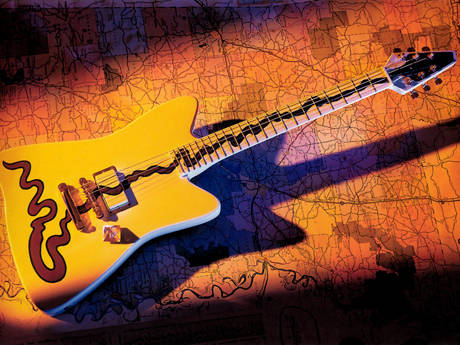geochem1st
V.I.P. Member
- Joined
- Mar 21, 2008
- Messages
- 27,748
- Reaction score
- 40,941

"The Normandy guitar is said to be the worlds first production aluminum archtop guitar. It is a lightweight instrument that produces warm tones."
Manufacturing is a high note for aluminum guitar maker | Normandy | Zephyr Engineering | Machine Design
"Because of various tonal qualities and different grades of aluminum, it took time to get the right tone and sound until the specific design and the internal bracing was perfected. Now, with a patent pending since 2005, the final product is available for purchase and has gone from a dream to a solid contender in the guitar manufacturing world.
The American-made guitars are manufactured and hand-riveted in Salem, Oregon. Known for their sustainable qualities and warm tones, these lightweightaluminum electric guitars are an instant classic. They are now available in nine colors and three different and unique finishes: chrome, powder coat and candy apple metal flake finish.
Normandy Guitars ensures the quality by hand-picking every component. Each guitar takes several months to finish. Discoveries like making their own overwound pick-ups for a high output that mimic that 1950s sound set them apart from the average wooden guitar. These quality components combined with the aluminum body allow for an incredible sound with greater sustain."
Normandy Guitars® Aluminum Electric Guitars - Company Profile





 ). What I'd like to hear next is tap tone wood of several prepared freboards, and see how much they differ...
). What I'd like to hear next is tap tone wood of several prepared freboards, and see how much they differ...
